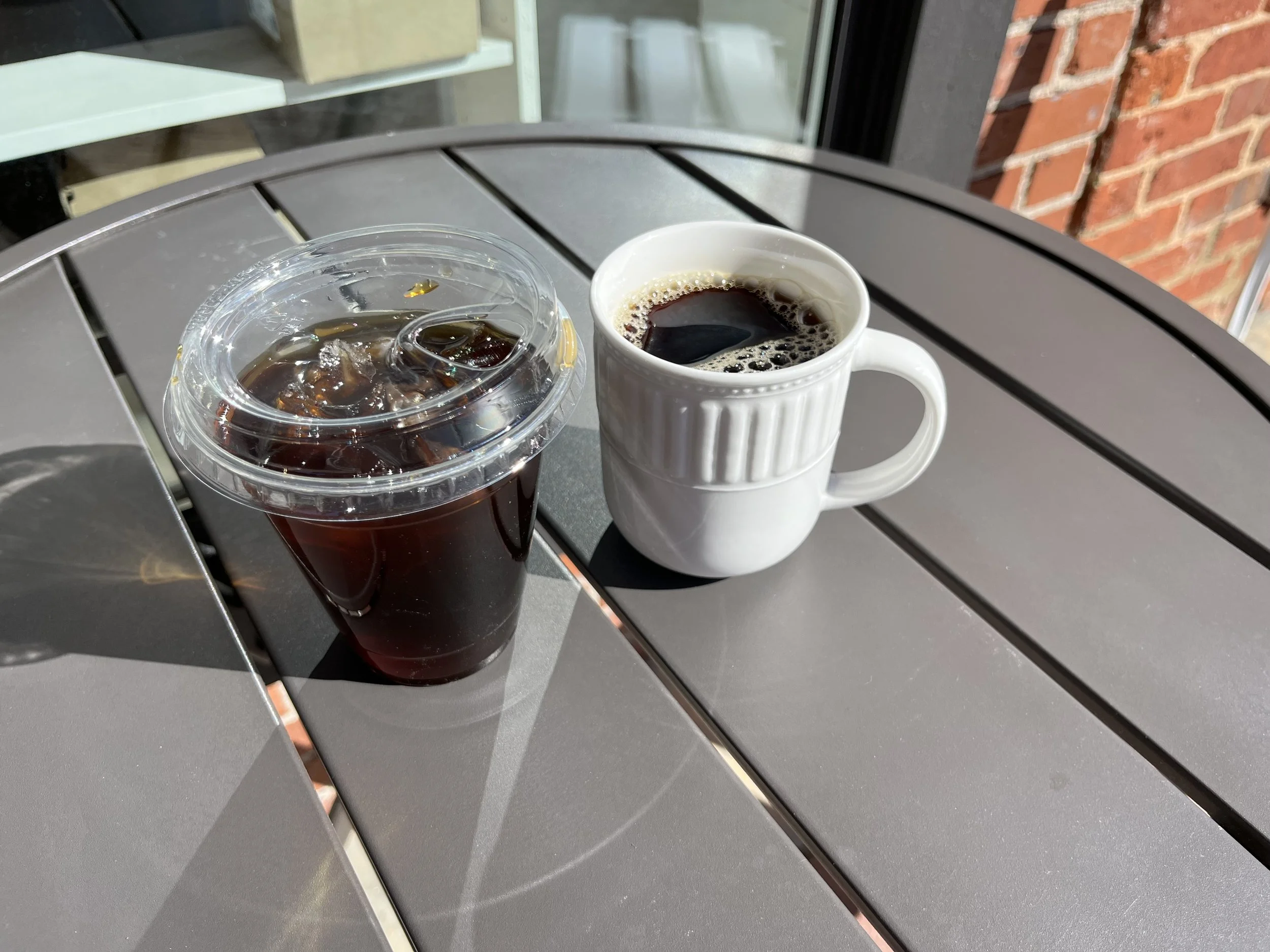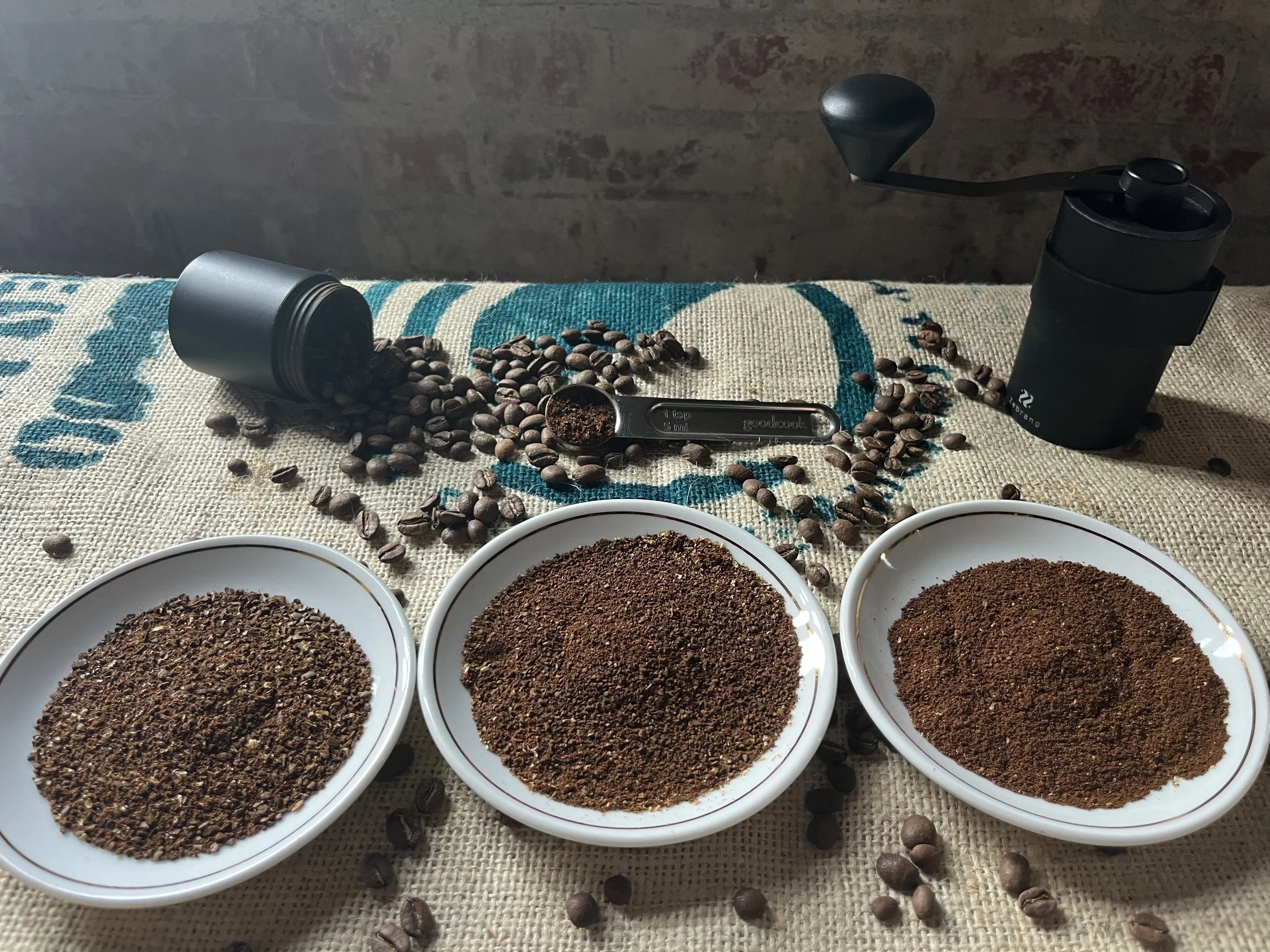Grind Size Matters.
Have you ever brewed a cup of coffee that you swear was brewed the same way, but it tasted different than the previous cup you enjoyed? There are a variety of things that can impact your brew such as water quality, grind size and storage that we covered in a previous blog: Brewing the Perfect Cup: Tips for Making Great Coffee at Home. This blog will focus on what makes grinding coffee so important.
Coffee is one of the most versatile beverages on the planet. There are hundreds if not thousands of variations of coffee that can impact the flavor of your coffee: the variety of coffee plant the coffee comes from, the country your coffee is grown in, the processing method the coffee goes through before it is sent to the coffee roaster, what profile the coffee is roasted to (light, medium, or dark), and finally how it is brewed and prepared. Whether it’s coffee you buy while eating breakfast at a diner, a cappuccino at your favorite coffee shop, or you brew your own coffee at home, one of the key factors in these coffees tasting excellent is using the correct grind size.
When it comes to grinding coffee, there is a science to it, but it doesn’t have to be complicated. Coffee beans are filled with a variety of flavors, aromas, oils, gasses, and caffeine. In order to get our desired cup of joe, we “extract” these attributes out of the beans by using water. Those flavors combine with water molecules to produce the unique flavors found in your cup.
There are five primary things that determine how coarse or how fine you need to grind your coffee:
Amount of water
Temperature of the water
Time the coffee is in contact with water
Agitation (is the coffee stirred; is water poured into it once or several times?)
Pressure
Consider the following: adding one tablespoon of water to a cup of sugar. It is likely that the sugar will simply absorb the water, and you will be left with a sticky pile of sugar. Now consider adding a whole gallon of water to the same amount of sugar. You will be left with mostly water that tastes somewhat sweeter. Now keep with the gallon of water to one cup of sugar ratio- think about how the temperature of your water could change the results. Your sugar will dissolve faster using hot water. If you let the sugar sit in cold water, the water will eventually get sweeter, but it will take significantly longer to do so. What happens when you stir the mixture? The sugar will dissolve even faster. This analogy is similar to coffee, but coffee doesn’t quite dissolve like sugar.
You can put whole bean coffee in water, and you will extract a hint of coffee into your water. The finer you grind it, the more surface area of the coffee is exposed to water, and so you extract more coffee. On average, you only extract 18-22% of coffee solids into your water when brewing (Boydell, 2018). It is possible to extract less, or slightly more, but that will lead to bitter or sour flavors in your cup. This is where it gets tricky and people may resign to “one grind fits all,” and buy whatever pre-ground coffee they get at the store.
To simplify the concept of grind sizes, many liken it to pouring water through a tube filled with sand. It will take the longest for water to pass through sand, and may even require extra pressure to push the water completely through the sand. The larger the granular of sand is- like pebbles or rocks- the easier and faster the water will pass through. In other words, the finer the grind, the more surface area water has to extract from.
Ground coffee from left to right: Coarse, Medium, Fine.
As mentioned earlier, grind size directly impacts extraction. It is possible to over or under-extract your coffee leading to commonly undesirable flavors and textures. If you grind your coffee too fine, overheat your water, if the coffee is in contact with water for too long, or you agitate your grinds too much you are at risk of over extraction. Over extraction leads to extra bitter, dry, and thick coffee. Under extraction usually comes from grinding your coffee to coarse, not using hot enough water, not giving the coffee enough time in contact with water, or not agitating your coffee enough. This leads to sour, weak, or even salty flavors.
Tasting these intricacies takes practice, and is highlighted more or less depending on what brewing method you use. Fortunately most brewing methods are fairly forgiving, and there is room for experimentation. Once you’ve mastered grind size, you can start adjusting ratios, brew temperatures, timing, and more to enjoy all the complexities that coffee has to offer.
References:
Boydell, H, “Coffee Extraction & How It Helps Create The Perfect Cup,” Perfect Daily Grind, November 22, 2018 https://perfectdailygrind.com/2018/11/understanding-coffee-extraction-for-your-perfect-cup/


